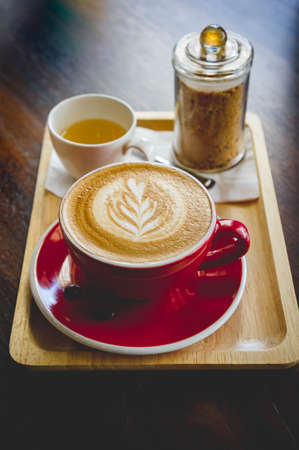1. Choosing the Right Coffee Beans
If youre aiming to make the perfect cold brew concentrate at home, it all starts with choosing the right coffee beans. The type of bean you use plays a huge role in how your cold brew will taste—smooth, bold, sweet, or even chocolaty.
Roast Level Matters
For cold brew, medium to dark roasts are often the go-to choice. These roasts bring out rich, deep flavors that pair perfectly with the slow steeping process of cold brewing. Light roasts can work too, especially if you prefer brighter, fruitier notes—but they may come off a little too acidic for some tastes when brewed cold.
| Roast Level | Flavor Profile | Cold Brew Suitability |
|---|---|---|
| Light Roast | Citrusy, floral, high acidity | Good for adventurous palates |
| Medium Roast | Balanced, nutty, smooth acidity | Great for most drinkers |
| Dark Roast | Bold, chocolatey, low acidity | Excellent for strong, smooth brews |
Origin and Flavor Profile
The region where your coffee is grown affects its flavor. For example:
- Ethiopian beans: Often fruity and floral—great if you want a unique twist on your cold brew.
- Colombian beans: Smooth and balanced—ideal for everyday drinking.
- Sumatran beans: Earthy and bold—perfect for deep, rich brews.
Go Coarse with Your Grind
No matter which beans you choose, make sure they’re coarsely ground. A coarse grind slows down extraction during the steeping process, helping avoid over-extraction and bitterness. It also makes filtering much easier later on.
Why Coarse Grind Works Best
- Smoother flavor: Prevents bitter compounds from seeping into your coffee.
- Easier to strain: Larger particles don’t clog filters as easily.
- Better shelf life: Cold brew concentrate made with coarse grounds stores well in the fridge for up to two weeks.
Selecting the right beans might take a little experimenting, but once you find your favorite combo of roast level and origin, youll be well on your way to brewing café-quality cold brew right at home.
2. Grinding and Measuring Your Coffee
To make a rich and flavorful cold brew concentrate at home, getting your coffee grind and measurements just right is key. Heres how to do it the right way.
Choose the Right Grind Size
Cold brew calls for a coarse grind—think sea salt or raw sugar texture. A grind thats too fine can lead to over-extraction, making your brew bitter and murky. A burr grinder is ideal for getting an even, coarse consistency.
Grind Size Comparison
| Grind Type | Texture | Best For |
|---|---|---|
| Fine | Powdery like table salt | Espresso |
| Medium | Sandy, like regular sugar | Drip coffee makers |
| Coarse (Recommended) | Chunky, like sea salt | Cold Brew |
Measure the Right Ratio
The golden rule for cold brew concentrate is using a higher coffee-to-water ratio than you would for regular coffee. This creates a strong base that can be diluted to taste later.
Recommended Coffee-to-Water Ratios
| Coffee (by weight) | Water (by volume) | Brew Strength |
|---|---|---|
| 1 oz (28g) | 1 cup (8 oz) | Mild Concentrate |
| 1:4 ratio (e.g., 4 oz coffee to 16 oz water) | Standard Cold Brew Concentrate | |
| 1:3 ratio (e.g., 6 oz coffee to 18 oz water) | Extra Strong Concentrate |
Pro Tip:
If youre using a kitchen scale, weigh your beans instead of measuring by volume. Its more accurate and helps ensure consistency every time you brew.
Troubleshooting Tip:
If your cold brew turns out too weak or too strong, adjust the ratio slightly next time until you find your sweet spot. Remember, its all about what tastes good to you!
Now that youve got your grind size and measurements down, youre ready to start brewing. In the next section, we’ll cover steeping methods and timing for the perfect extraction.
![]()
3. The Steeping Process
Now that youve got your coffee beans ground and your ratio set, its time to dive into the steeping process — the heart of making cold brew concentrate. This step is all about letting time and water do their magic. Heres what you need to know to get it just right.
Ideal Water Temperature
Cold brew gets its name for a reason — its brewed without heat. Youll want to use cold or room temperature filtered water, ideally between 35°F and 70°F (1.6°C – 21°C). Avoid using hot water, as it will extract different flavors and defeat the purpose of cold brewing.
How Long Should You Steep?
Steeping time has a big impact on flavor development. Patience really pays off here! Heres a quick guide:
| Steeping Time | Flavor Outcome |
|---|---|
| 12 Hours | Lighter body, mild flavor |
| 16 Hours | Balanced, smooth, slightly sweet |
| 20-24 Hours | Bold, strong concentrate with rich flavor |
If youre unsure where to start, try steeping for about 16 hours at room temperature and adjust based on your taste preference.
Choosing the Right Container
The type of container you use matters more than you might think. It should be clean, non-reactive, and large enough to hold your coffee-water mix comfortably. Here are some great options:
| Container Type | Why It Works |
|---|---|
| Mason Jar | Affordable, airtight, easy to store in fridge |
| French Press | Makes straining easy; built-in plunger helps separate grounds |
| Cold Brew Maker (with filter) | Designed specifically for cold brew; less mess |
The Role of Patience in Flavor Development
This isn’t a process you want to rush. Cold brewing slowly extracts the oils, sugars, and caffeine from coffee grounds without introducing bitterness or acidity. Letting it steep for the full recommended time allows all those subtle flavors to develop naturally. The result? A smoother, richer coffee concentrate that’s worth every minute.
Quick Tips for Steeping Success:
- Keep your container covered during steeping to avoid contamination.
- If you’re brewing in the fridge, extend steeping time by a few hours.
- After steeping, strain immediately to prevent over-extraction.
The steeping process is where your cold brew truly comes to life — take your time and let those flavors shine!
4. Filtering and Storing the Concentrate
Once your cold brew has steeped for 12 to 24 hours, its time to filter it. This step is key to getting that smooth, clean taste without any gritty bits or coffee sludge. Here’s how you can do it right at home with tools you probably already have.
Filtering Your Cold Brew
You want to remove all the coffee grounds from your brew without losing flavor. Heres a simple way to do it:
Basic Filtering Methods
| Method | What You Need | Pros | Cons |
|---|---|---|---|
| Coffee Filter | Paper coffee filter + funnel or mesh strainer | Removes fine particles; very smooth result | Takes longer; may clog if using fine grounds |
| Fine Mesh Strainer | Fine sieve or mesh strainer | Quick and easy; reusable tool | May let some sediment through |
| Cheesecloth or Nut Milk Bag | Cheesecloth or nut milk bag + bowl or pitcher | Reusable; good balance of speed and clarity | Slightly messier cleanup than paper filters |
Pro Tip:
If you’re looking for ultra-smooth cold brew, try double-filtering—first with a mesh strainer, then through a coffee filter.
Storing Your Cold Brew Concentrate
Now that your concentrate is filtered, proper storage keeps it fresh and flavorful. Always store your cold brew in the fridge.
Best Storage Practices:
- Use airtight containers: Glass jars like Mason jars or swing-top bottles work great.
- Avoid plastic if possible: It can absorb odors and affect taste over time.
- Label your jar: Add the date you brewed it so you know how fresh it is.
- Shelf life: Cold brew concentrate stays fresh for up to 2 weeks in the fridge, but it tastes best within the first week.
Your cold brew concentrate is now ready to use anytime! Just dilute it with water, milk, or your favorite non-dairy alternative whenever you need a refreshing pick-me-up.
5. How to Serve and Customize Your Cold Brew
Now that youve made the perfect cold brew concentrate at home, its time to enjoy it just the way you like. Cold brew concentrate is strong and smooth, so youll want to dilute it before drinking — unless youre into bold flavors!
How to Dilute Cold Brew Concentrate
The standard ratio for serving cold brew is 1 part concentrate to 1 part water, but you can adjust this based on your taste preferences. If you like a lighter cup, try 1:2 (one part concentrate to two parts water or milk).
Common Dilution Ratios
| Strength | Concentrate | Water/Milk |
|---|---|---|
| Strong | 1 part | 0.5–1 part |
| Regular | 1 part | 1 part |
| Mild | 1 part | 2 parts |
Serving Over Ice
Pour your diluted cold brew over a glass filled with ice. Since cold brew is naturally less acidic than hot brewed coffee, it’s super refreshing and easy to drink cold.
Add-Ins to Make It Your Own
If you’re used to ordering fancy iced coffees at your local café, you can totally recreate those flavors at home. Heres how:
Popular Add-Ins in American Coffeehouses
| Add-In Type | Examples |
|---|---|
| Flavored Syrups | Vanilla, Caramel, Hazelnut, Mocha |
| Milk Alternatives | Oat Milk, Almond Milk, Soy Milk, Coconut Milk |
| Sweeteners | Sugar, Honey, Maple Syrup, Stevia |
| Toppings | Whipped Cream, Cinnamon, Chocolate Shavings |
Create Your Signature Drink
You can mix and match different ingredients to find your perfect combo. Try vanilla syrup with oat milk for a creamy treat, or add a splash of coconut milk and a dash of cinnamon for a tropical twist.
Pro Tip:
If youre making multiple servings ahead of time, store your diluted cold brew in the fridge in a sealed container for up to 2–3 days. Always add ice and toppings right before serving for the best experience.

